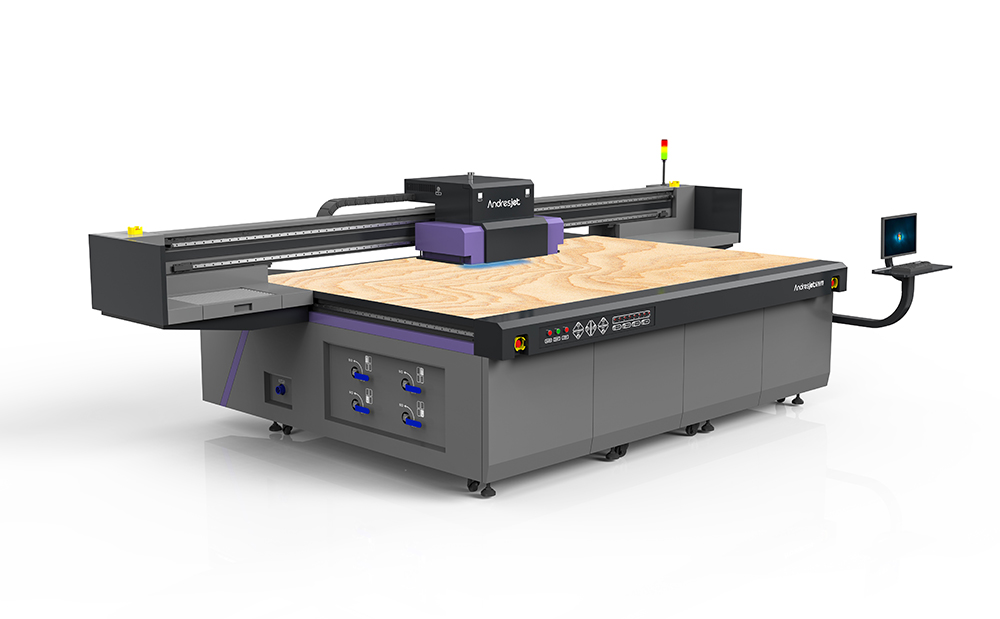How to Choose the Right Substrate for Your UV Flatbed Printer?
How to Choose the Right Substrate for Your UV Flatbed Printer?
In the realm of digital printing, UV flatbed printers have revolutionized the way we produce high-quality, vibrant prints on a wide array of materials. These printers utilize ultraviolet (UV) light to instantly cure ink as it is deposited onto the substrate, resulting in sharp, durable images that can withstand various environmental conditions. However, the success of your printing project heavily relies on selecting the appropriate substrate for your specific needs. This article delves into the key considerations when choosing the right substrate for your UV flatbed printer, ensuring optimal print quality and longevity.

1. Understanding Substrate Compatibility
The first step in selecting a substrate is to understand the compatibility with your UV flatbed printer. Not all materials are suitable for UV printing due to differences in ink absorption, surface texture, and chemical reactivity. Manufacturers often provide a list of recommended substrates that have been tested and proven compatible with their printers. It’s crucial to consult this list before experimenting with new materials to avoid potential print failures or damage to your printer.
2. Consider the Application and Environment
The intended application and environment in which the printed material will be used play a pivotal role in substrate selection. For instance, if you’re printing signage that will be exposed to direct sunlight and harsh weather conditions, you’ll need a substrate that is UV-resistant and weatherproof. Similarly, for indoor applications where durability is less of a concern, you might prioritize substrates that offer excellent color reproduction and a smooth finish.
3. Evaluate Ink Adhesion and Cureability
UV inks cure through a chemical reaction initiated by UV light. The substrate’s ability to facilitate this reaction, known as cureability, is vital. Some materials require higher UV intensity or longer exposure times to ensure complete ink curing. Poor cureability can lead to tacky surfaces, reduced print durability, and even ink migration. Test prints on your chosen substrate are essential to confirm adequate ink adhesion and cure.
4. Consider the Substrate’s Surface Properties
The physical properties of the substrate surface, including porosity, texture, and smoothness, significantly impact print quality. A porous surface may absorb ink unevenly, leading to blotchy prints, while a textured surface can affect ink laydown and result in a less-than-ideal finish. Smooth surfaces generally provide the best print quality but may require pretreatment for optimal ink adhesion. Understanding how ink interacts with different surfaces is crucial for achieving desired results.
5. Weigh the Cost and Availability
Cost and availability are practical considerations that can influence your substrate choice. While some substrates offer superior print quality and durability, they might be more expensive or harder to source. Balancing cost with performance is key, especially for large-scale projects or businesses operating on tight margins. Consider the long-term value a substrate provides, including its durability and the potential for repeat customers, when making your decision.
6. Explore Specialty Substrates for Unique Applications
UV flatbed printers are versatile and can print on a variety of specialty substrates, including glass, metal, wood, plastics, and even flexible materials like fabric and leather. Each of these materials presents unique opportunities for creative applications. For example, printing directly onto glass can create stunning decorative panels, while metal substrates are ideal for durable outdoor signage. Exploring these specialty options can open up new avenues for your printing business.
7. Test and Experiment
Before committing to a large-scale project, conduct thorough testing on your chosen substrate. This includes evaluating ink adhesion, cure quality, color accuracy, and the overall aesthetic appeal of the printed material. Experimentation may also involve adjusting printer settings, such as ink density and UV intensity, to optimize print quality. Remember, every substrate reacts differently to UV inks, and empirical evidence is often the best guide.
8. Consult with Experts and Suppliers
Leverage the knowledge of your printer supplier, ink manufacturer, and experienced printers in your industry. They can provide valuable insights into substrate performance, offer recommendations based on their expertise, and even assist with testing. Collaborating with suppliers can also ensure you stay updated on the latest substrate innovations that could enhance your printing capabilities.
9. Sustainability and Environmental Impact
In today’s eco-conscious world, considering the environmental impact of your substrate choice is important. Look for materials that are recyclable, biodegradable, or made from sustainable sources. Additionally, evaluate the energy efficiency of the curing process and explore ways to minimize waste, such as using leftover substrate for smaller prints or samples.
10. Legal and Regulatory Considerations
Be mindful of any legal or regulatory requirements that may affect your substrate choice. For instance, certain materials may be restricted for use in food packaging or require specific certifications for indoor air quality. Ensuring compliance with these regulations protects both your business and your clients from potential legal issues.
In conclusion, choosing the right substrate for your UV flatbed printer is a multifaceted decision that involves understanding material compatibility, considering the application and environment, evaluating ink adhesion and cureability, assessing surface properties, weighing cost and availability, exploring specialty options, conducting tests, consulting experts, and factoring in sustainability and legal considerations. By thoroughly evaluating these aspects, you can select a substrate that not only meets your project requirements but also enhances the overall quality and impact of your UV prints.
